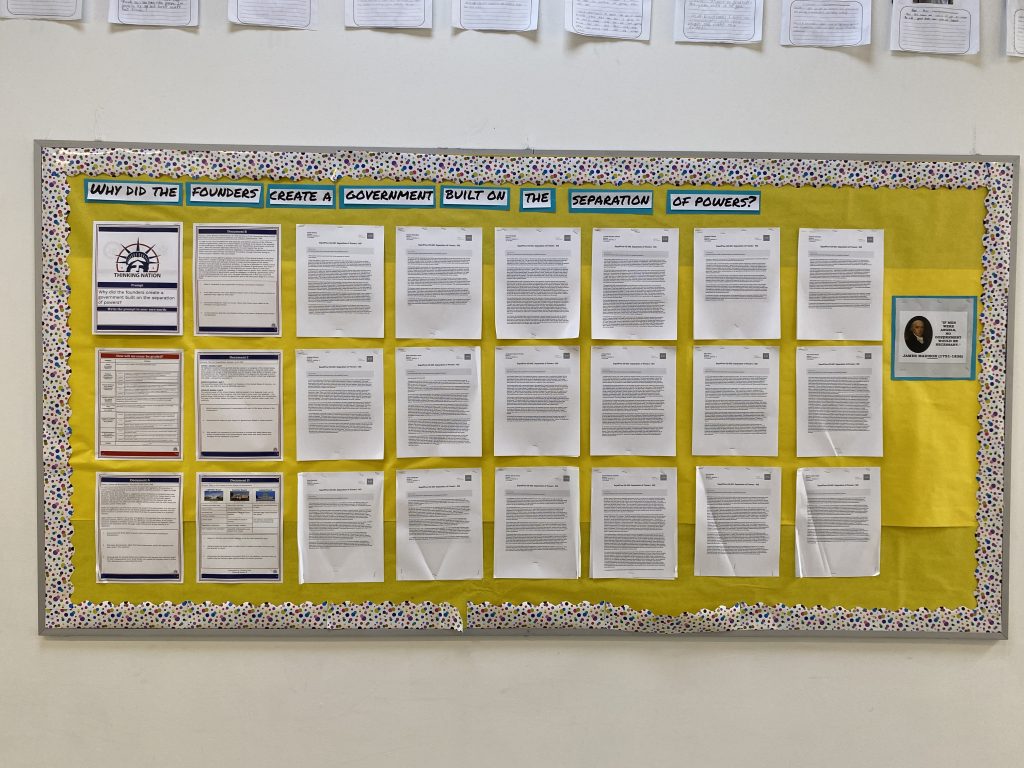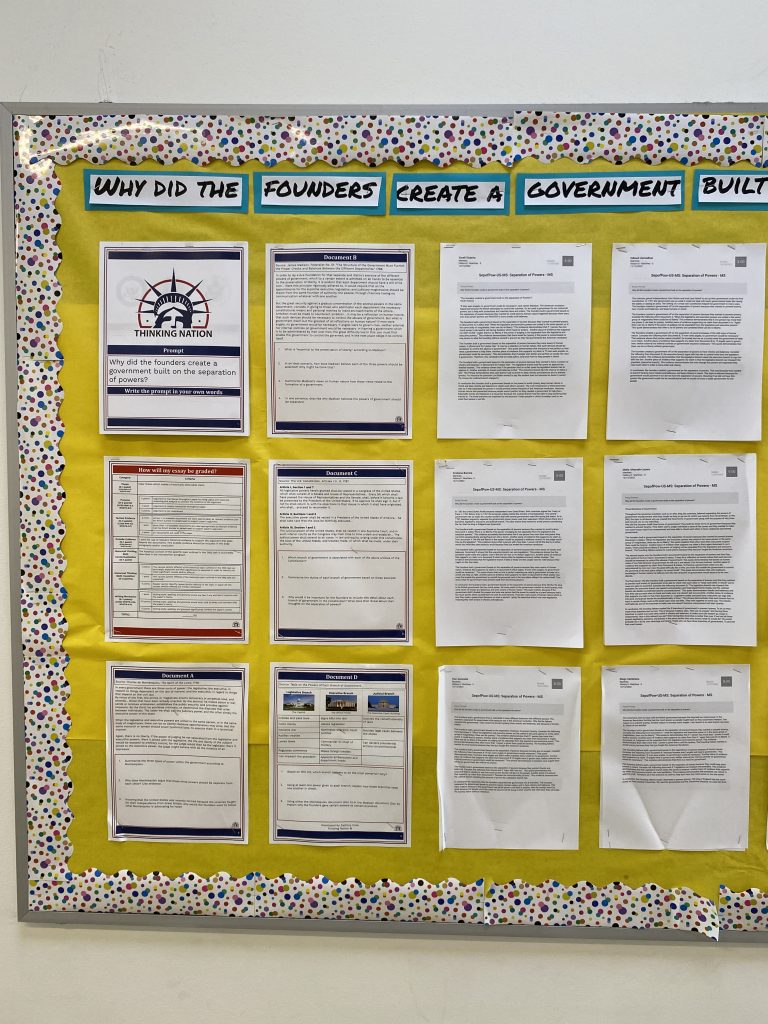I was visiting one of our partner schools in Los Angeles recently and I happily saw that the 8th grade teacher, Mr. Martinez, had student writing on the wall in the hallway outside his classroom. His school, Stella Middle Charter Academy, has partnered with Thinking Nation for a few years now and it has been so rewarding to watch the students grow.

My initial reaction was admittedly a little proud. It’s always cool to see Thinking Nation out and about. But as I reflected, I recognized that what Mr. Martinez was doing was both shifting and shaping the culture of learning at his campus.
Most times that we put up student work, it is the work that has immediate visual appeal. Artwork, maps, pamphlets, etc. This work does indeed look nice, but it often does not showcase student thinking. In fact, many of these assignments require the same amount of DOK 1 knowledge that most content-based multiple choice questions require. In a way, these pieces of student work reward students for restating the information that we or a textbook or website gave them at an earlier date. By putting them up, we are sending a message of what we reward in our class.
In the case of much (not all!) student art work, we are sending the message that what is valued by us (and at our school) is visually appealing work that demonstrates content knowledge. But this isn’t history.
History is the study of the past and we have to employ historical thinking in order to do that well. What Mr. Martinez was doing was demonstrating to students and passing staff and parents that he was rewarding something deeper. He was showcasing student writing that couldn’t simply be taken in by quickly walking by. It encouraged the passerby to stop, read samples of student work, look at a rubric that assessed higher order thinking and writing skills, and engage with a variety of arguments. Mr. Martinez was rewarding historical thinking.

This may seem small, but in this simple way he was setting a tone for the type of work that was celebrated in his class. He was shifting the culture from “this looks nice, let’s post it,” to “this is deep work, let’s celebrate it!” If we want to cultivate thinking citizens and shift the paradigm of history education, this is the school culture shift we need. If we shape our culture to reward deep thinking and complex writing, guess what? Students will begin to showcase their deep thinking and push to become better writers. From there, the paradigm will shift.
As we reflect on what we reward at our schools, I hope that Mr. Martinez’s example can serve as an inspiration for us all.